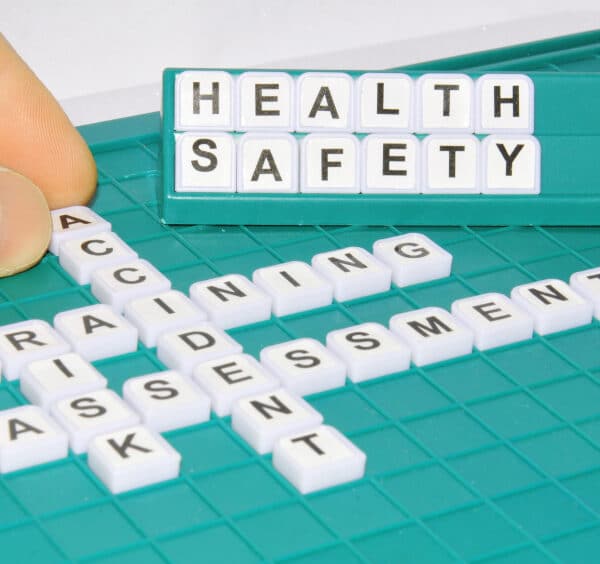
Hazards at work
At any stage of the work activity being done, there is always the potential of an accident or damage to someone’s health occurring. Employees are exposed to hazards, be they slips, trips, falls, fire, hazardous substances, loads which have to be manually handled, equipment use, electricity, working with display screen equipment, or even psychological hazards such as stress. The different hazards that workers are exposed to daily can lead to incidents at work. An overview of the national amount of such incidents is given in the latest annual statistics report for great Britain 2012/13 http://www.hse.gov.uk/statistics/overall/hssh1213.pdf. The main statistics are as follows, and paint a grim picture of the outcome of incidents at work:
Injuries
- 148 workers were killed at work, a rate of 0.5 fatalities per 100,000 workers.
- 78,222 other injuries to employees were reported under RIDDOR, a rate of 311.6 per 100 000 employees.
- 175,000 reportable injuries (defined as over-7-day absence) occurred, according to the Labour Force Survey, a rate of 610 per 100,000 workers.
Ill health
- 1.1 million people who worked during the last year were suffering from an illness (long-standing as well as new cases) they believed was caused or made worse by their current or past work. 0.5 million of these were new conditions which started during the year.
- A further 0.7 million former workers (who last worked over 12 months ago) were suffering from an illness which was caused or made worse by their past work.
- 2,291 people died from mesothelioma in 2011 and thousands more from other occupational cancers and diseases such as COPD.
Enforcement
- 574 cases were prosecuted by HSE in England and Wales.
- 105 cases were prosecuted by local authorities in England and Wales.
- 27 cases were prosecuted by the Procurator Fiscal in Scotland.
- 13,503 enforcement notices were issued by all enforcing authorities.
Working days lost
- 27 million days were lost overall in 2011/12 due to work-related ill health or injury (17 days per case).
- 22.7 million were lost due to work-related ill health and 4.3 million due to workplace injury. A more recent estimate for injuries indicates that 5.2 million days were lost in 2012/13 (no data is available for ill health).
The financial cost of safety caused by failure at work actually happening in the workplace in Great Britain
The HSE Cost to Britain of workplace fatalities and self-reported injuries and ill health 2010/11 National Statistics http://www.hse.gov.uk/statistics/pdf/cost-to-britain.pdf gives an overview on the estimated actual costs to the employee, employer and Great Britain.
Updated estimates show the total cost associated with workplace injuries and ill health in Great Britain in 2010/11 to be £13.8 billion in 2011 prices.
The financial cost to the individual and their family
The cost to of workplace injury to the individual of workplace is both financial and non-financial. The 2010/11 estimates (in 2011 prices) produce the following breakdown of lost income to employees:
- Gross loss of earnings: £4,094 million
- Less sick pay income: (£1,077 million)
- Less state benefits income: (£1,722 million)
- Less saved tax and National Insurance: (£787 million)
- Net loss of income: £508 million
Costs to employers
This section presents estimates of the costs to employers of workplace injury and work-related ill health in 2010/11 (in 2011 prices). Costs to employers include:
- Sick pay payments
- Insurance premiums
- Production disturbance costs
- Administrative and legal costs
Net costs of sick pay and associated National Insurance are calculated as follows:
- Payments to individuals: £1,077 million
- Less Government reimbursements: (£10 million)
- National insurance on sick pay: £138 million
- Total net cost of sick pay: £1,205 million
Production disturbance
Production disturbance costs are associated with work reorganisation and recruitment and induction of temporary or permanent replacement staff, in order to maintain output. In 2010/11, these costs were estimated to be around £128 million.
Administrative and legal costs
The combined cost of administrative and legal costs was around £86 million in 2010/11.
Total costs to society
The overall estimated cost to society is:
- Benefits, reduced tax/NI receipts 2,381 (£ millions)
- Health and rehabilitation costs 615 (£ millions)
- Administrative and legal costs 38 (£ millions)
Total costs 3,034 Estimated costs (£ millions)
Responsibility for Health and Safety
After reading these factual, reported statistics it is easy to see why the management and implementation of health and safety in the workplace is important to everyone and to society as a whole. Everyone has a responsibility for health and safety within the workplace.
Responsibility of the Employer
The employer should ensure that they provide a safe working environment as part of section 2(1) of the Health and Safety at Work Act 1974 http://www.legislation.gov.uk/ukpga/1974/37
2 (1) General Duties of employers to their employees
‘It shall be the duty of every employer to ensure, so far as is reasonably practicable, the health, safety and welfare at work of all his employees.’
Responsibility of the Employee
The employee has general duties as part of section 7(a) of the Health and Safety at Work Act 1974 http://www.legislation.gov.uk/ukpga/1974/37
7 (a) It shall be the duty of every employee while at work –
‘To take reasonable care for the health and safety of himself and of other persons who may be affected by his acts or omissions at work’
In the next article we will explore the responsibilities of the employer in greater detail. We will examine the different steps the employer can take in the development and implementation of a good health and safety culture within the workplace, to prevent an incidents at work and ultimately avoid the burden of costs associated with an incident on the business, employee and society. Throughout all the future articles we will give advice on the implementation of the QCS policies and forms and how they will play a role when used to support the development of a positive health and safety culture within your business.



